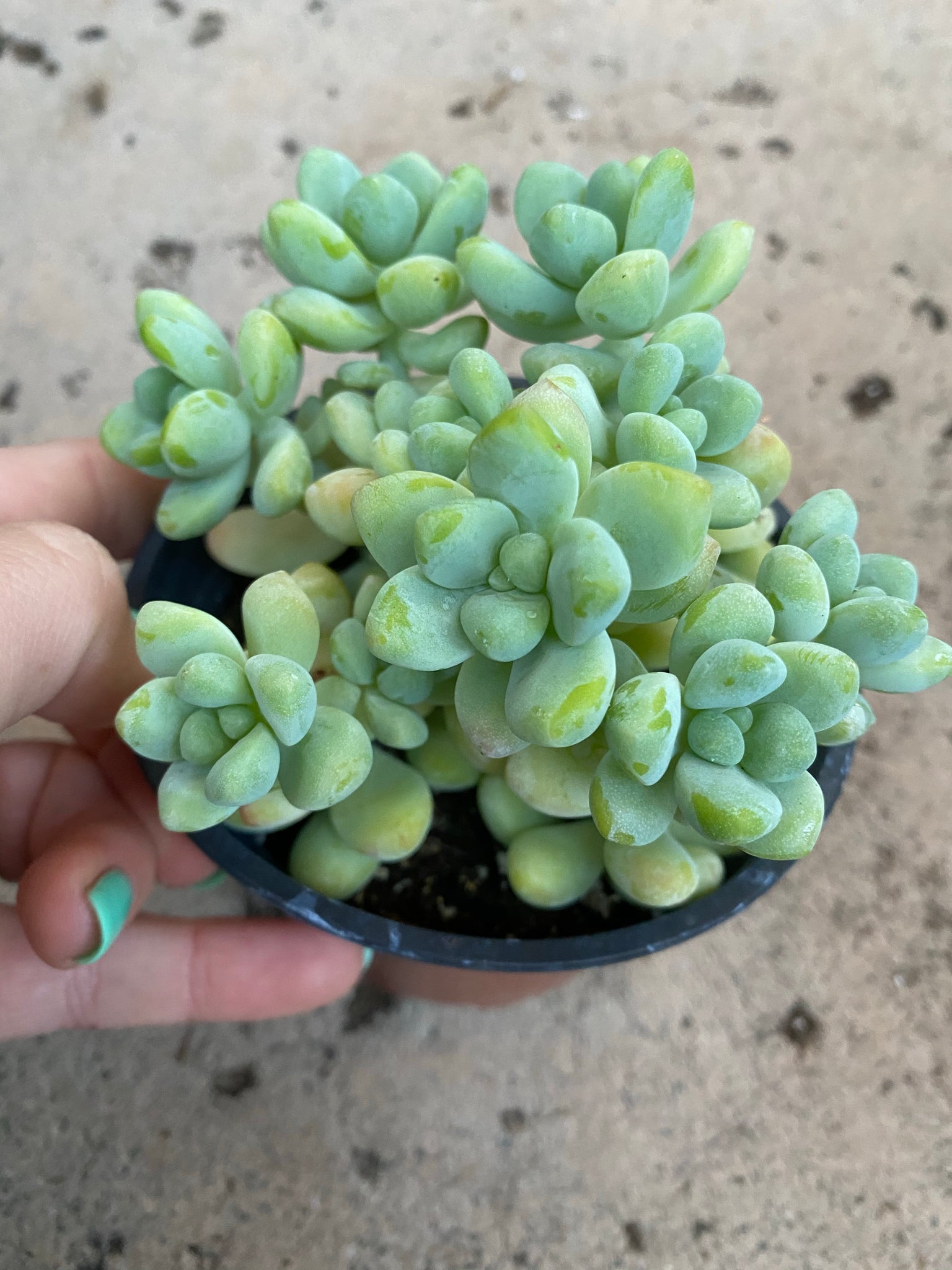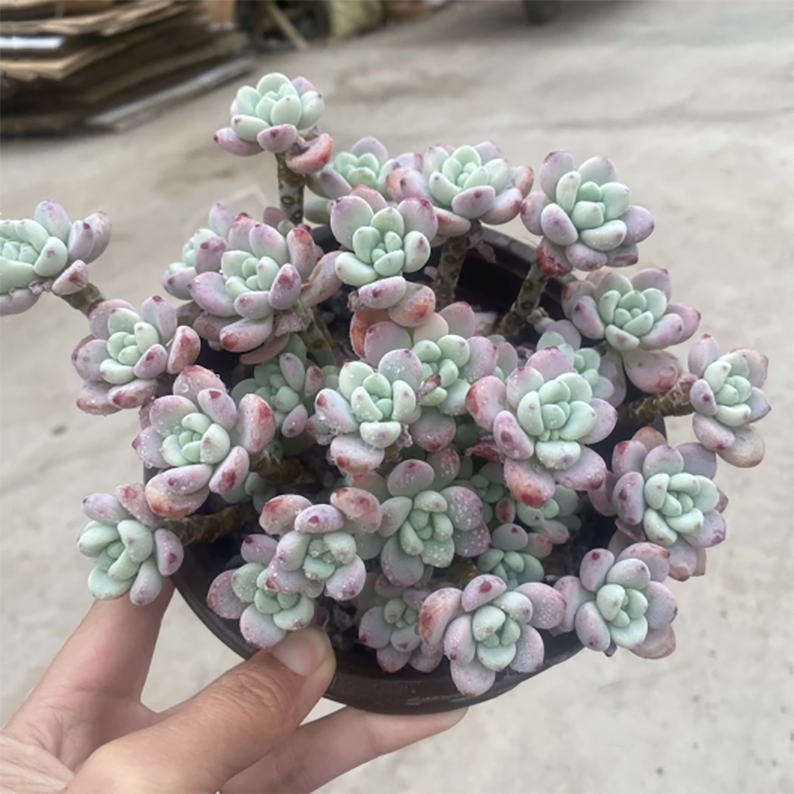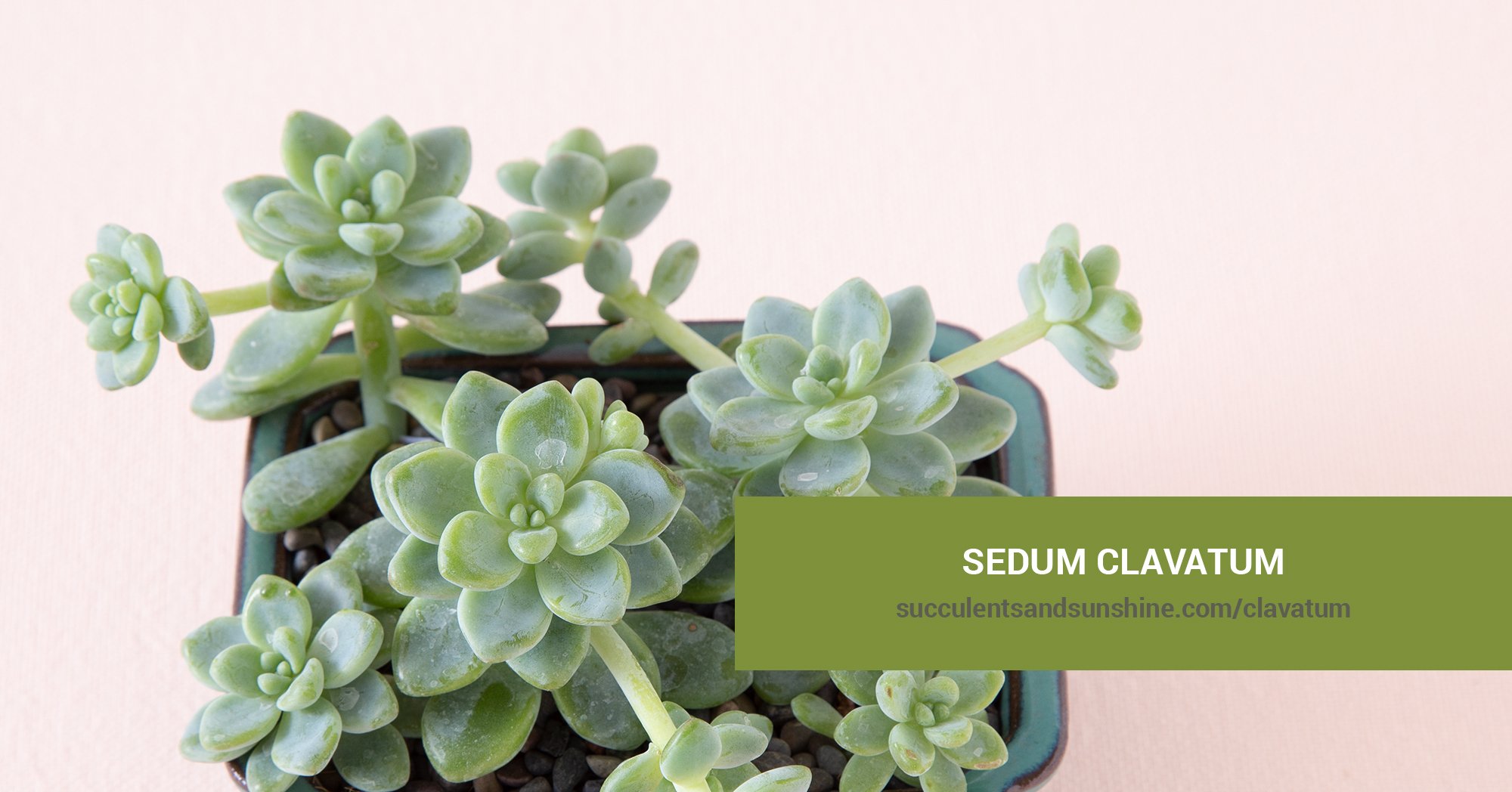Sedum clavatum produces striking round, blueish-green leaves that form a stunning rosette. This low-growing plant makes an ideal ground cover or looks great in a hanging basket.
Table of Contents
Care and Propagation Information
Sedum clavatum is an evergreen succulent that is perfect for creating ground cover with its spreading and trailing growth. It also looks great in hanging baskets. During the summer months, you can expect to see small white flowers appearing.
When Sedum clavatum is grown outside, its blueish-green leaves can take on a beautiful light pink hue when stressed. However, if it is kept indoors, the plant will not do as well and will likely not keep its color.
Watering
Sedum clavatum requires the typical amount of water needed to keep a succulent healthy.
Where to Plant
Put your Sedum in a spot where it will get a minimum of 6 hours of sunlight each day. It thrives in hanging baskets or rock gardens, too.
Growing Season
Sedum clavatum flourishes most during cooler months, so it’s recommended to fertilize it in the Spring and Fall and abstain from doing so in the summer.
How to Propagate Sedum clavatum
It is simple to propagate Sedum clavatum through leaves, cuttings, or seeds.
Leaves
Place the leaf in a shallow container with a half-inch of water. Change the water every few days. After a few weeks, the leaf should have developed roots and can be transplanted into potting soil or a garden.
To propagate Sedum plants, select a strong and healthy leaf and twist it away from the stem. It is okay if a bit of the stem is taken with the leaf. Place the leaf in a shallow container with half an inch of water, changing the water every few days. After a few weeks, the leaf should have grown roots and can be transferred to potting soil or a garden.
Allow the leaf to form a protective callous over several days, then place it on soil that drains well. Water only when the soil has dried out. When roots and a rosette have grown and the original leaf has withered, transplant the new growth.
Cuttings
To propagate a Sedum clavatum, utilize a sharp and sterile knife or pair of scissors. Cut the stem off the Sedum plant and let the cut heal for a couple of days before planting in soil that has good drainage.
Seeds
If you want to propagate Sedum from seed, you should start by planting them in a soil that drains well during the autumn months. If you live in a region where the climate is warm enough (Zone 9a or higher), you can sow the seeds directly outdoors. However, if you live in a cooler area, you should begin the sowing process indoors using a grow light.
Care and Propagation Information
General Care for Sedum clavatum
When Sedum clavatum is grown outside, its blueish-green leaves can take on a beautiful light pink hue when stressed. However, if it is kept indoors, the plant will not do as well and will likely not keep its color.
Watering
Sedum clavatum requires the typical amount of water needed to keep a succulent healthy.
Where to Plant
Put your Sedum in a spot where it will get a minimum of 6 hours of sunlight each day. It thrives in hanging baskets or rock gardens, too.
Growing Season
Sedum clavatum flourishes most during cooler months, so it’s recommended to fertilize it in the Spring and Fall and abstain from doing so in the summer.
How to Propagate Sedum clavatum
It is simple to propagate Sedum clavatum through leaves, cuttings, or seeds.
Leaves
Place the leaf in a shallow container with a half-inch of water. Change the water every few days. After a few weeks, the leaf should have developed roots and can be transplanted into potting soil or a garden.
To propagate Sedum plants, select a strong and healthy leaf and twist it away from the stem. It is okay if a bit of the stem is taken with the leaf. Place the leaf in a shallow container with half an inch of water, changing the water every few days. After a few weeks, the leaf should have grown roots and can be transferred to potting soil or a garden.
Allow the leaf to form a protective callous over several days, then place it on soil that drains well. Water only when the soil has dried out. When roots and a rosette have grown and the original leaf has withered, transplant the new growth.
Cuttings
To propagate a Sedum clavatum, utilize a sharp and sterile knife or pair of scissors. Cut the stem off the Sedum plant and let the cut heal for a couple of days before planting in soil that has good drainage.
Seeds
If you want to propagate Sedum from seed, you should start by planting them in a soil that drains well during the autumn months. If you live in a region where the climate is warm enough (Zone 9a or higher), you can sow the seeds directly outdoors. However, if you live in a cooler area, you should begin the sowing process indoors using a grow light.



